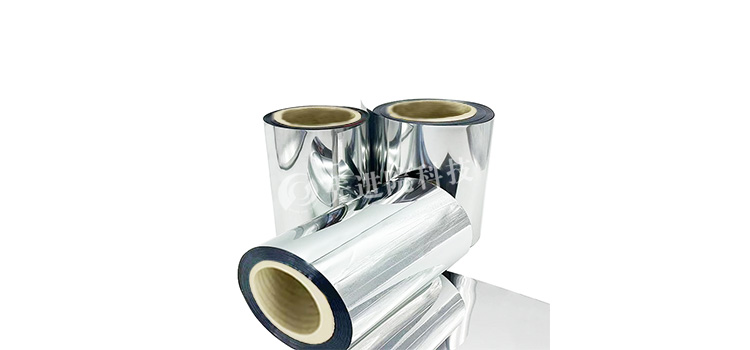Among various material applications, PP (polypropylene) silver plated film is widely used in fields such as electronics, packaging, optics, etc. due to its good conductivity, reflectivity, and certain flexibility. However, as the usage time increases, the glossiness retention of its coating faces many challenges, which not only affects the appearance of the product, but may also have a certain impact on its functionality. Advanced Institute (Shenzhen) Technology Co., Ltd. has been focusing on material technology research and development for a long time, and is improving its capabilities
PP silver plated filmWe have accumulated rich experience in maintaining the glossiness of the coating.
1、 Challenges Faced
(1) Oxidation process
Although silver has relatively stable chemical properties, it will still react with substances such as oxygen and sulfur in the air during long-term use. Especially in environments with high humidity, oxidation reactions accelerate. For example, when the relative humidity of the environment exceeds 60%, silver atoms are prone to lose electrons and form silver oxide. Silver oxide is black or brownish black and covers the surface of the silver plating layer, damaging the original mirror structure of the coating and causing diffuse reflection of light, resulting in a significant decrease in glossiness.
(2) Physical wear and tear
In practical use,
PP silver plated filmMay experience friction with other objects. If inside electronic products, the PP silver plated film on the circuit board may rub against surrounding components due to component vibration. This physical wear will make the surface of the silver plating layer rough, and the appearance of scratches will damage the flatness of the coating. Light cannot be reflected regularly, thereby reducing glossiness. Even slight daily friction, long-term accumulation can have a significant impact on glossiness.
(3) Environmental erosion
In addition to oxidation, PP silver plated film may also be corroded by other chemicals in the environment. In some industrial environments, acidic gases such as sulfur dioxide and nitrogen oxides can react chemically with silver plating in the presence of water vapor, corroding the coating. This not only changes the chemical composition of the coating surface, but also causes local peeling or the formation of pits, seriously damaging the glossiness of the coating.

2、 Solution
(1) Optimize silver plating process
-
Preprocessing improvement: Before silver plating,Advanced Institute (Shenzhen) Technology Co., LtdPerform special pretreatment on PP substrate. By using plasma treatment technology, active functional groups are introduced on the surface of PP to enhance the adhesion between the substrate and the silver plating layer. This way, the silver plating layer is more firm and can reduce the damage to the coating caused by physical wear, which is beneficial for maintaining glossiness. After testing, PP silver plated film with improved pretreatment process showed a decrease in glossiness of about 30% compared to untreated film under the same friction conditions.
-
Silver plating parameter optimization: By precisely controlling parameters such as current density, plating solution concentration, and temperature during the silver plating process, the crystallization of the silver plating layer can be made more uniform and dense. For example, controlling the current density within a specific range can allow silver atoms to deposit in an orderly manner on the surface of PP, resulting in a more stable coating structure and enhanced resistance to environmental erosion, which helps maintain glossiness.
(2) Post processing technology
-
Passivation treatment: Advanced Institute (Shenzhen) Technology Co., Ltd. passivates the silver plated PP film. By using a specific chemical solution, a dense passivation film is formed on the surface of the silver plating layer. This film can effectively prevent oxygen, water vapor, and other substances from coming into contact with the silver layer, slowing down the oxidation reaction. Experiments have shown that after passivation treatment, the glossiness of PP silver plated film can still maintain over 80% of its initial value after being left in a high humidity environment for 1000 hours, while untreated film can only maintain about 50%.
-
Coating protection: Apply a transparent, wear-resistant, and highly adhesive organic protective film on the surface of the silver plated film. This film can not only further isolate the corrosion of the silver plating layer by the external environment, but also reduce physical wear and tear. The smooth surface of the protective film can assist in the regular reflection of light, to some extent enhancing and maintaining glossiness. The coating material developed by the company has moderate hardness, which can effectively protect the silver plating layer without affecting the flexibility of the PP film due to its hardness.

(3) Material Composite Innovation
take
PP silver plated filmComposite with other materials with protective properties. For example, developing a PP composite film containing nano silica particles as the bottom layer, followed by silver plating treatment. Nano silica particles can enhance the strength and wear resistance of PP film, reducing the impact of physical wear on the silver plating layer. Meanwhile, the composite structure can improve the barrier performance of PP film, reduce the damage of environmental erosion to the silver plating layer, and thus enhance the glossiness retention.
The glossiness retention of PP silver plated film coating faces challenges such as oxidation, physical wear, and environmental erosion after long-term use. Advanced Institute (Shenzhen) Technology Co., Ltd. has provided an effective way to improve the glossiness retention of PP silver plated film coatings through a series of solutions such as optimizing silver plating processes, adopting post-treatment technologies, and innovating material composites, helping related products maintain good performance and appearance in long-term use.
The above data is for reference only, and specific performance may vary due to production processes and product specifications.






